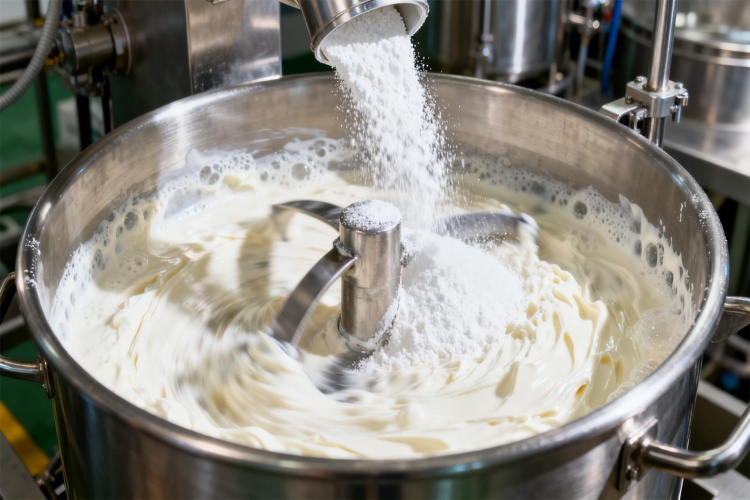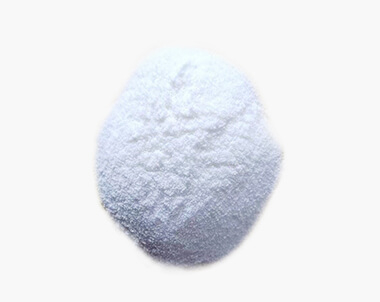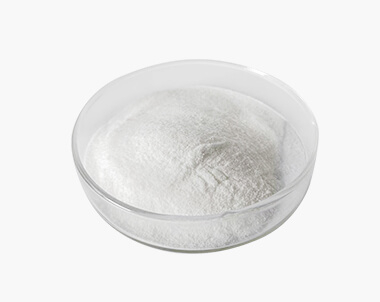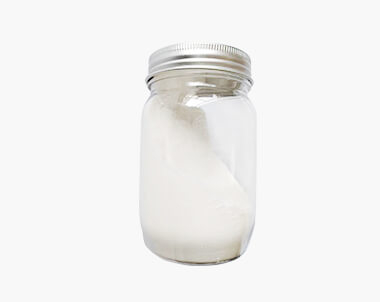Microcrystalline cellulose: The "invisible guardian" from pills to ice cream
Open your medicine cabinet and take out a box of pills; walk into the kitchen and grab a cup of low-fat ice cream. You may never have realized that these two seemingly unrelated products both have the same "invisible guardian" behind them - microcrystalline cellulose.
This seemingly technical term is actually a versatile figure indispensable in modern manufacturing. It is not something that can be used casually. It needs to go through processes such as hydrolysis and purification before it can become a reliable auxiliary material. Today, let's expose its "mysterious exterior" and take a look at the true appearance of this "behind-the-scenes hero"!
Natural essence, technology empowerment
The raw material of microcrystalline cellulose comes from the most abundant polymer in nature - cellulose. Common sources include wood and cotton fibers. Through a precisely controlled acid hydrolysis process, technicians remove the amorphous regions from cellulose, and what remains are these micron-sized crystalline particles.
This transformation process endows the material with unique properties: insoluble in water but capable of uniform dispersion; compressible and moldable, yet capable of disintegrating upon demand; not digestible by the human body and not generating heat. These characteristics make it particularly valuable in both the industrial and food sectors. When it comes to the pharmaceutical field, it has another nickname - "Quality Guardian". Microcrystalline cellulose is indispensable here. Just think about it: without its help, how could that tiny amount of active ingredient be turned into pills of the right size and with the correct dosage? In fact, microcrystalline cellulose plays three main roles in the pharmaceutical industry:
As a filler, it provides the necessary volume for the trace amount of drugs.
As a binder, it ensures the powder forms properly during the tablet pressing process.
As a disintegrant, it guarantees that the pills release the drug effect promptly in the body.
These properties make the large-scale production of modern solid pharmaceuticals possible. From common vitamins to life-saving medicines, behind them all lies the silent support of microcrystalline cellulose.
The "magician" of food texture
Moving on to the food industry, microcrystalline cellulose also demonstrates remarkable capabilities. These days, everyone is concerned about maintaining a healthy diet. It can help food manufacturers reduce fat and sugar content while preserving the good texture of the food. Take that low-fat ice cream for example. Without microcrystalline cellulose, it wouldn't be possible. It can form a stable network structure, preventing ice crystals from forming, so the texture is so smooth and delicate. Also, salad dressings and cream can avoid the separation of oil and water with its help. The taste remains uniform throughout the meal. People who want to control their calorie intake need not worry. It can increase the volume of the food, making you feel full after just a little bit, without any additional calorie burden. It can be found in various high-fiber foods and sugar-free recipes.
Safe and reliable, trustworthy
For such a widely used material, safety is naturally the top consideration. Fortunately, it is derived from natural sources and has stable properties, so major global food safety agencies all recognize it. Let's talk about Europe. They have already used it as a food additive, with the code name E460; the US Food and Drug Administration is even more direct, classifying it as "generally recognized as safe". This substance has been used for decades, and as long as it is used within the prescribed dosage, it will definitely not cause harm to the body.
Innovative applications, promising future
With the advancement of technology, the applications of microcrystalline cellulose have also increased. Take cosmetics for example, it can help adjust the texture of the products; in the field of environmental materials, it can also be used as a bio-based filler; even in the cutting-edge technology of 3D printing, its presence can be seen. These new uses not only demonstrate the wide range of this material's applications, but also show that the industry is currently pursuing sustainable development. From natural plants to high-tech products, microcrystalline cellulose has perfectly illustrated the concept of "turning waste into treasure" along the way.
Conclusion
When we take medicine or enjoy ice cream, we seldom think about the technological wisdom hidden within. Materials like microcrystalline cellulose, although we haven't noticed them, are actually quietly enhancing our quality of life. In this era full of technological wonders, we really should understand and respect these materials that work behind the scenes. Their existence also implies: The most remarkable innovations often lie in the most ordinary small details of life.





